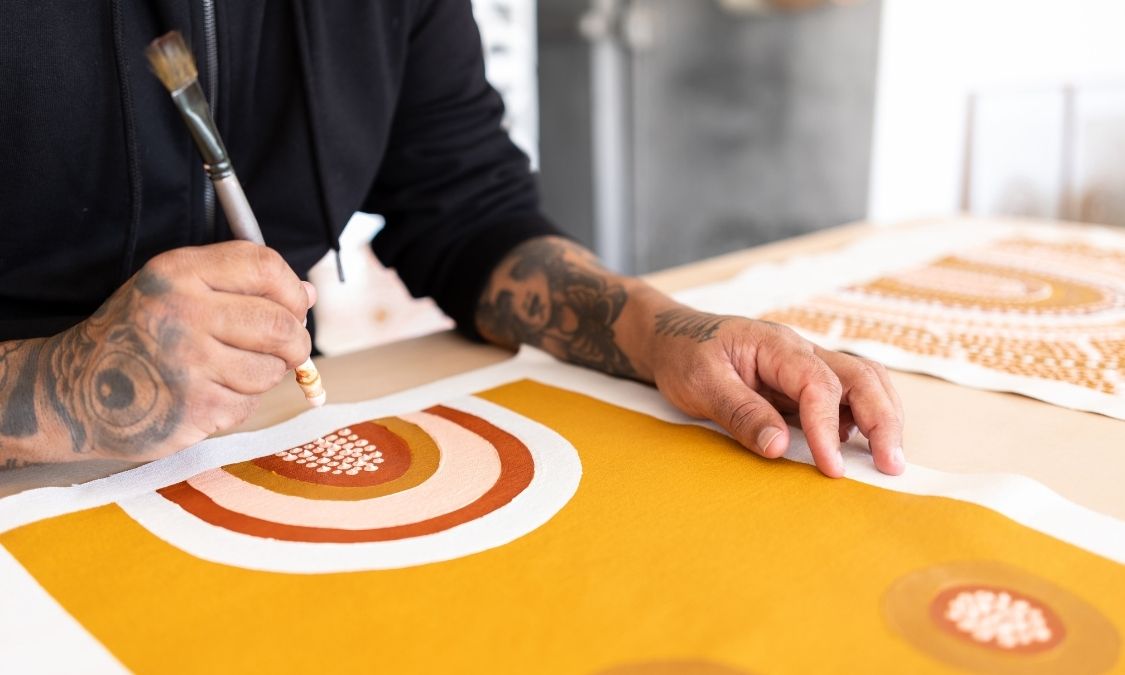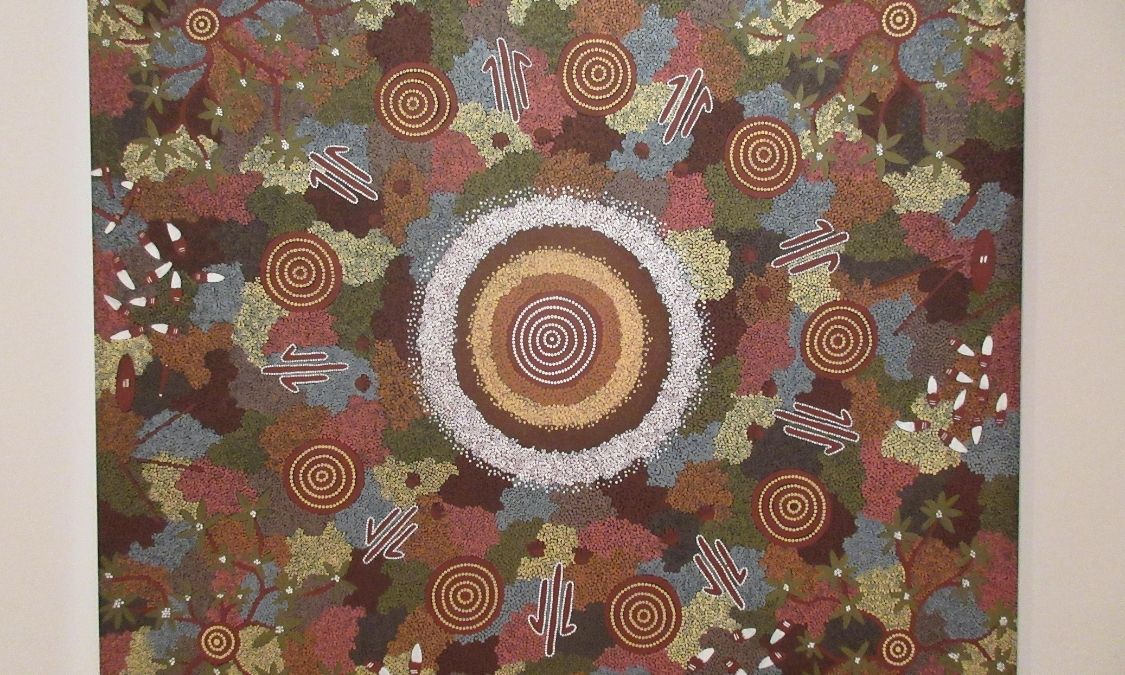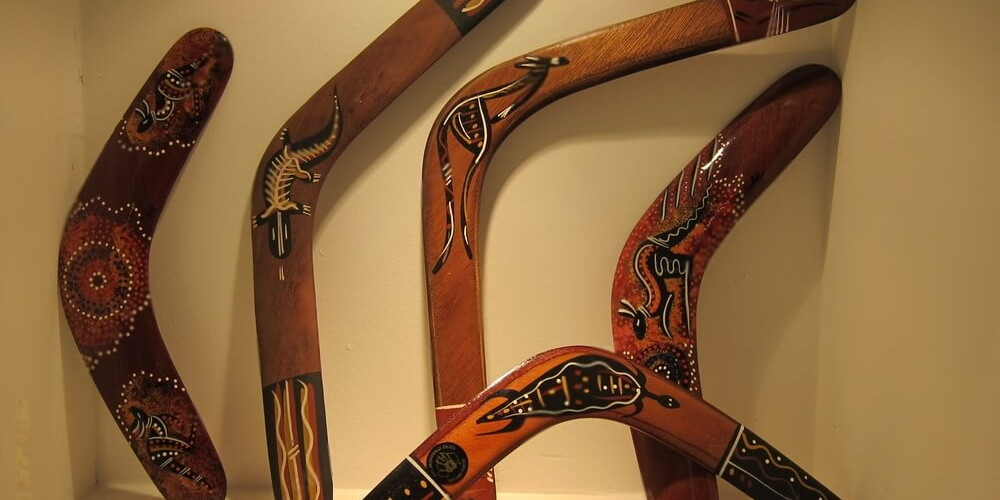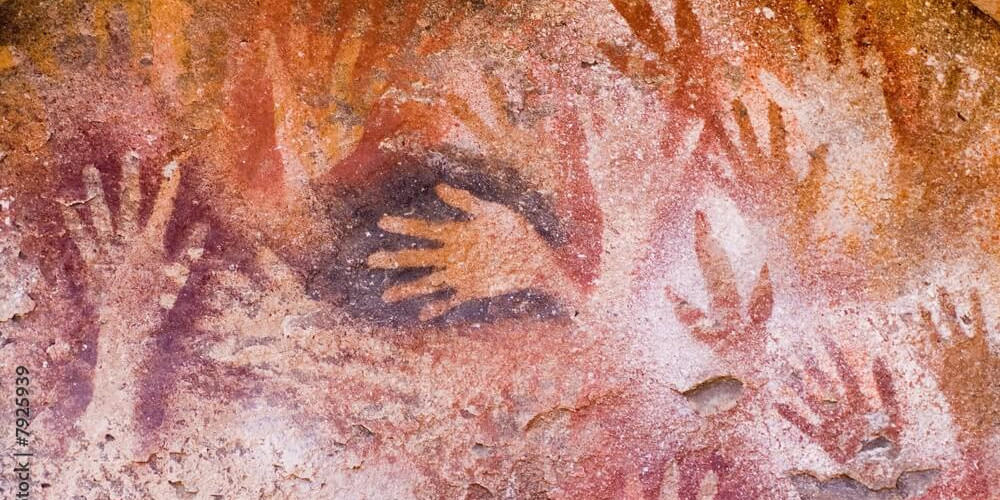In the heart of Australia’s Central Desert, art is more than decoration—it is language, memory, and law. One of the most recognisable forms of Aboriginal art, dot painting, carries rich cultural meaning. To outsiders, it may appear abstract or decorative, but to the Anangu people and other desert communities, every dot tells a story.
At Maruku Arts Gallery, we represent over 900 Aboriginal artists from more than 20 remote communities, each of whom uses dot painting not just to create, but to preserve ancestral knowledge and pass it on.
What Is Aboriginal Dot Painting?
Dot painting is a visual storytelling method where hundreds, sometimes thousands, of individual dots are used to build symbolic images. This technique became internationally recognised in the 1970s but has existed long before that—rooted in Tjukurpa (pronounced ‘chook-orr-pa’), the foundation of Anangu culture.
Tjukurpa refers to the ancestral stories, spiritual laws, and creation history that guide life. Dot paintings are coded expressions of these stories, passed down through generations.
Origins of Dot Painting in the Central Desert

While Aboriginal art has been practiced on rock walls, sand, and bodies for tens of thousands of years, the modern dot painting movement began in Papunya, west of Alice Springs, in the early 1970s. There, senior men began using acrylic paints to transfer sacred stories onto canvas.
To protect sacred knowledge, artists began to obscure spiritual elements of their stories using dots—turning sacred symbology into visually complex, layered compositions that outsiders could appreciate without seeing everything.
This innovation both protected cultural integrity and allowed Aboriginal artists to enter the contemporary art world on their own terms.
Symbolism in Dot Painting
Dot paintings are not random. They follow a symbolic language deeply tied to Country, ceremony, and kinship. Some recurring symbols include:
| Symbol | Meaning |
|---|---|
| ● Concentric Circles | Waterholes, campsites, sacred sites |
| ≈ or ~ | Journey lines, travel paths |
| U-shapes | Sitting figures (usually around a campfire or ceremony) |
| Animal Tracks | Presence of ancestral beings (kangaroo, emu, goanna) |
| Dotted Circles | Meeting places or significant gatherings |
Colours are also symbolic. Earthy reds, ochres, yellows, and blacks are drawn from the desert landscape, while white often represents spirit or ancestral presence.
More Than Aesthetic: The Function of Dot Painting
For Aboriginal people, dot painting isn’t about individual artistic expression—it is communal, ceremonial, and educational. Every piece:
- Preserves sacred law in visual form
- Teaches young people about land, identity, and kinship
- Maps Country in ways GPS never could
- Connects the present to the Dreaming
These paintings are not just art—they are knowledge systems passed through hands, brushstrokes, and time.
Dot Painting and Cultural Permission
At Maruku Arts Gallery, all artworks are created by Anangu artists with cultural permission. Only those with inherited rights may paint certain stories or symbols.
This is crucial: Aboriginal art is not a free-for-all of patterns and colours. It is a responsibility—and artists carry deep obligations to their ancestors and communities in the act of painting.
We ensure that every piece sold through Maruku is:
- Ethically sourced
- Culturally respectful
- Signed and accompanied by artist and story details
Stories That Echo Through Canvas

Every painting sold at Maruku has a story behind it—and that story is not a myth, but a map. A guide to how to walk on this land, relate to others, and honour the ancestors.
For example:
- A painting of Kuniya and Liru at Uluru tells the tale of ancestral conflict and ceremony still honoured today.
- A dot representation of Tingarri songlines charts ceremonial journeys across the Western Desert, only known in full to those initiated.
These are not just stories—they are living law.
Explore Authentic Dot Paintings at Maruku Arts Gallery
Whether you’re a visitor seeking deeper cultural connection or an art lover passionate about supporting Indigenous voices, dot paintings offer an invitation: to look, to learn, and to respect.
At Maruku Arts Gallery, we don’t just display art—we protect culture through it.
Conclusion: Dots That Hold a Universe
Aboriginal dot painting isn’t simple pattern work—it’s a cosmic blueprint, a spiritual map encoded with laws, land, lineage, and lore. These dots speak. And when you support authentic artists, you don’t just buy a painting—you honour 60,000 years of wisdom.



